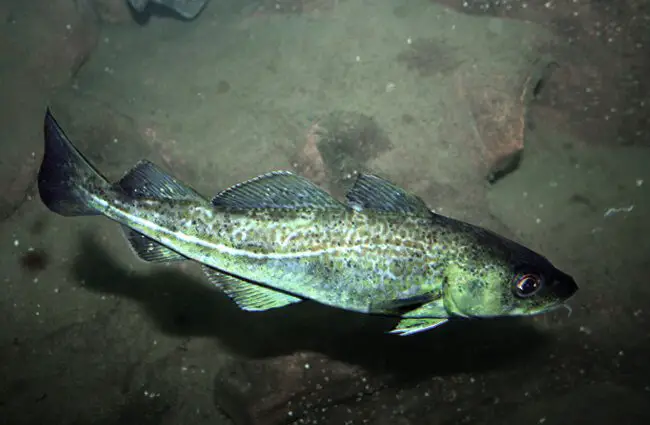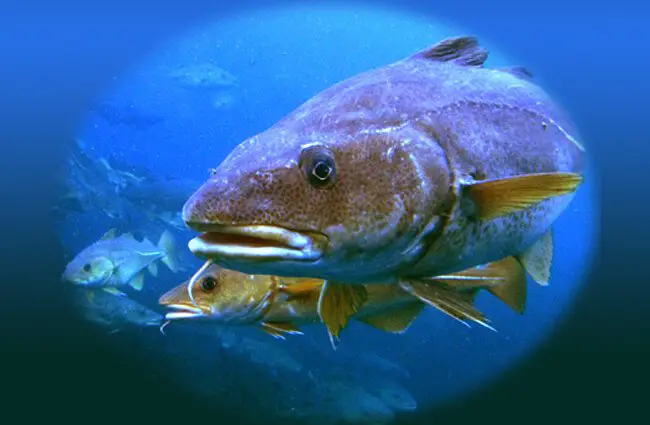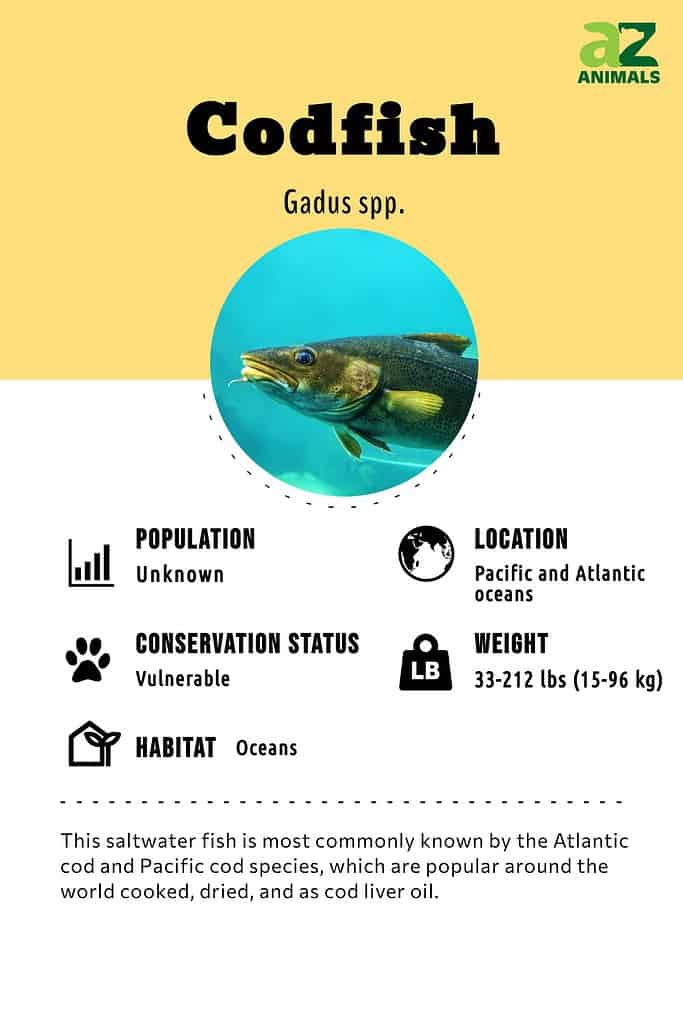Introduction

Cod is a popular fish among anglers and is highly sought after for its meaty fillets and delicate flavor. However, in order to successfully catch and understand this fish, it is important to have knowledge of its habitat. Cod can be found in both saltwater and freshwater environments, and their habitat preferences and migration patterns play a crucial role in their survival and population dynamics. In this article, we will explore the natural habitat of cod in both saltwater and freshwater, analyze their migration patterns, and discuss the impact of human activities on their habitat. By understanding these aspects, we can better appreciate and conserve the habitat of this remarkable species.
Overview Of Cod And Its Popularity In Fishing
Cod is a highly popular fish among anglers due to its meaty fillets and delicate flavor. It is widely sought after for both commercial and recreational fishing purposes. The large size and abundance of Cod make it an appealing target for fishermen. Its popularity can be attributed to its versatile culinary uses and the high demand for its flesh in various cuisines. Additionally, Cod fishing has become a cultural tradition in many coastal communities, further contributing to its popularity among fishing enthusiasts.
Importance Of Understanding Cod’s Habitat
Understanding Cod’s habitat is crucial for several reasons. Firstly, it allows us to effectively target and catch Cod during fishing expeditions. Knowing their preferred depths and temperatures helps anglers increase their chances of success. Additionally, understanding Cod’s habitat is essential for conservation efforts. By studying their habitat requirements and migration patterns, we can implement measures to protect and preserve their environment. This knowledge is vital for maintaining healthy Cod populations and sustaining the ecological balance in saltwater and freshwater ecosystems. Preserving Cod’s habitat also ensures the continued availability of this popular fish for commercial and recreational purposes.
Cod Habitat In Saltwater

Cod is primarily found in saltwater habitats, specifically in the Atlantic, Pacific, and Greenlandic oceans. These fish prefer benthic habitats, which are areas near the sea floor characterized by rocky bottoms, reefs, and mud or sand substrates. They can also be found in brackish water, which is a mix of salt and freshwater. Cod are known to inhabit depths ranging from shallow coastal waters to deeper offshore areas. Understanding the saltwater habitat preferences of Cod is essential for effectively targeting and catching them during fishing expeditions. It also helps in implementing conservation measures to protect their environment.
Description Of Cod’s Natural Habitat In Saltwater
Cod thrive in a variety of saltwater habitats, including the Atlantic, Pacific, and Greenlandic oceans. They are typically found in benthic environments, which are characterized by rocky bottoms, reefs, and mud or sand substrates. Cod can adapt to different depths, ranging from shallow coastal waters to deeper offshore areas. They are also known to inhabit brackish water, which is a mix of salt and freshwater. These habitats provide Cod with ample food sources and shelter, allowing them to thrive and reproduce successfully. Understanding the specific features and requirements of Cod’s saltwater habitat is crucial for conservation and sustainable fishing practices. [7]
Depth And Temperature Preferences Of Cod
Depth and temperature are two important factors that influence the habitat preferences of Cod. Cod are known to inhabit a wide range of depths, from shallow coastal waters to deeper offshore areas. They can be found at depths of up to 200 meters or more. In terms of temperature, Cod prefer colder waters, with their distribution being closely related to sea surface temperature. During the summer, they tend to move to deeper and colder waters as surface temperatures increase. This preference for colder temperatures is likely due to the physiological adaptations of this cold-water species.
Cod Habitat In Freshwater

Cod are primarily known as saltwater fish, but they can also be found in freshwater environments. In freshwater, Cod are often found in areas where rivers meet the ocean, such as estuaries and brackish waters. These transitional zones provide a mix of saltwater and freshwater, creating an ideal habitat for Cod. They are capable of adapting to lower salinity levels and can tolerate the fluctuations in water conditions that occur in these areas. However, it’s important to note that Cod are not as abundant in freshwater as they are in their natural saltwater habitats.
Exploration Of Cod’s Habitat In Freshwater
Cod’s habitat exploration in freshwater reveals that while they are primarily known as saltwater fish, they can also be found in certain freshwater environments. In these freshwater habitats, which typically occur in areas where rivers meet the ocean or in estuaries and brackish waters, Cod can adapt to lower salinity levels and tolerate fluctuations in water conditions. However, it’s important to note that Cod are not as abundant in freshwater as they are in saltwater habitats. These transitional zones provide a mix of saltwater and freshwater, creating an ideal habitat for Cod.
Freshwater Ecosystems Where Cod Can Be Found
Freshwater ecosystems where Cod can be found include areas where rivers meet the ocean, estuaries, and brackish waters. These transitional zones provide a mix of saltwater and freshwater, creating an ideal habitat for Cod. In these freshwater environments, Cod can adapt to lower salinity levels and tolerate fluctuations in water conditions. However, it’s important to note that Cod are not as abundant in freshwater as they are in saltwater habitats. Nonetheless, their presence in these transitional zones highlights their ability to explore and inhabit a variety of environments. [15]
Migration Patterns

Migration patterns are an important aspect of understanding the habitat of Cod. While there is limited knowledge about the Pacific Cod’s migration pattern, scientists have found it to be complex with no distinct pattern yet identified. However, it has been observed that the majority of tracked Pacific cod undertake migrations in the middle of March. These migrations can range from 64 to 394 kilometers, as they move from their winter spawning areas to their summer foraging areas. Further research is needed to gain a comprehensive understanding of Cod’s migration patterns and the factors that influence their movements between saltwater and freshwater environments.
Analysis Of Cod’s Migration Patterns
The migration patterns of Cod are complex and have no distinct pattern yet identified. However, researchers have observed that the majority of tracked Pacific Cod undertake migrations in the middle of March. These migrations can range from 64 to 394 kilometers as they move from their winter spawning areas to their summer foraging areas. Further research is needed to gain a comprehensive understanding of Cod’s migration patterns and the factors that influence their movements between saltwater and freshwater environments. Conservation efforts should consider protecting the migration routes and habitats that Cod rely on. [19]
Factors That Influence Cod’s Movement Between Saltwater And Freshwater
Factors that influence Cod’s movement between saltwater and freshwater include a combination of biological and environmental factors. One of the main drivers is the availability of suitable food sources. Cod may migrate to freshwater environments if there is an abundance of prey species or if their usual saltwater feeding grounds become depleted. In addition, water temperature plays a crucial role. Cod are cold-water species and prefer cooler temperatures, so they may migrate to colder freshwater areas during warmer months. Changes in salinity levels and water quality can also affect Cod’s movement patterns between saltwater and freshwater habitats. Human activities such as dams, pollution, and habitat degradation can disrupt Cod’s migration routes and impact their ability to move between these environments. Conserving and protecting both saltwater and freshwater habitats is essential for maintaining healthy Cod populations. [22]
Human Impact On Cod Habitat

Human activities have a significant impact on the habitat of cod. Overfishing is a major concern as it can deplete cod populations, disrupting their natural ecosystem. Pollution, such as oil spills and runoff from agricultural activities, can contaminate the water and negatively affect the health of cod and their habitat. Habitat destruction, caused by activities like dredging, can also disrupt the spawning and feeding grounds of cod. It is crucial to regulate fishing practices, reduce pollution, and protect critical habitats to ensure the survival and conservation of cod populations. [24]
Discussion On How Human Activities Affect Cod’s Habitat
Human activities have a significant impact on the habitat of cod. Overfishing has led to a decline in cod populations, disrupting their natural ecosystem. Pollution, such as oil spills and agricultural runoff, can contaminate the water, affecting the health of cod and their habitat. Habitat destruction, caused by activities like dredging, can also disrupt the spawning and feeding grounds of cod. It is essential to regulate fishing practices, reduce pollution, and protect critical habitats to ensure the survival and conservation of cod populations. Conservation efforts are important to maintain the ecological balance and the sustainability of cod habitats.
Overfishing, Pollution, And Habitat Destruction
Overfishing, pollution, and habitat destruction are significant human activities that have adversely affected the habitat of cod. Overfishing has led to a decline in cod populations, disrupting their natural ecosystem. Pollution, such as oil spills and agricultural runoff, contaminates the water and negatively impacts the health of cod and their habitat. Habitat destruction, caused by activities like dredging, disrupts the spawning and feeding grounds of cod. It is crucial to regulate fishing practices, reduce pollution, and protect critical habitats to ensure the survival and conservation of cod populations. Conservation efforts are essential to maintain the ecological balance and sustainability of cod habitats.
Conclusion

In conclusion, the exploration of cod’s habitat reveals its adaptability to both freshwater and saltwater environments. While cod is primarily associated with saltwater habitats, it can also be found in certain freshwater ecosystems. Understanding the preferences and migration patterns of cod is essential for its conservation and management. It is crucial to address the human impact on cod habitats, such as overfishing, pollution, and habitat destruction. Conservation efforts, including regulating fishing practices and protecting critical habitats, are necessary to ensure the sustainability and preservation of cod populations. By recognizing these factors, we can contribute to the balance and long-term survival of cod and its habitat.
Summary Of Cod’s Habitat Exploration
Cod’s habitat exploration has revealed its adaptability to both freshwater and saltwater environments. While primarily associated with saltwater habitats, cod can also be found in certain freshwater ecosystems. Understanding the preferences and migration patterns of cod is vital for its conservation and management. Human activities such as overfishing, pollution, and habitat destruction pose significant threats to cod populations and their habitats. Conservation efforts aimed at regulating fishing practices and protecting critical habitats are essential for the long-term survival and preservation of cod. By recognizing these factors, we can contribute to the sustainability of cod populations and their habitats.
Importance Of Conservation Efforts For Cod Population And Habitat Preservation
Conservation efforts play a crucial role in protecting the population and habitat of cod. The decline in cod populations and degradation of their habitats highlight the urgent need for conservation initiatives. By implementing regulations on fishing practices, such as catch limits and gear restrictions, we can prevent overfishing and allow cod populations to replenish. Additionally, efforts to reduce pollution and habitat destruction, such as improving water quality and preserving critical spawning grounds, are vital for the long-term survival of cod. Conservation helps maintain a balanced ecosystem and ensures the sustainability of cod populations for future generations.
FAQ: Is Cod Freshwater or Saltwater?
Q: Is cod a freshwater fish or a saltwater fish?
A: Cod is a saltwater fish. They inhabit ocean waters and are not found in freshwater ecosystems.
Q: What is the habitat of cod?
A: Cod is primarily found in cold saltwater environments. They are native to the North Atlantic Ocean and can be found along the coastlines of North America, Europe, and parts of Greenland.
Q: Can cod adapt to freshwater?
A: No, cod cannot survive in freshwater environments. They are specially adapted to live in saltwater and their physiology does not allow them to tolerate low salinity levels.
Q: Why are cod not found in freshwater ecosystems?
A: Cod have evolved to thrive in marine environments. Their bodies have specific adaptations that enable them to survive in saltwater, such as osmoregulation mechanisms to regulate their body’s salt concentration. They require a high level of salinity to maintain proper bodily functions.
Q: Are there any species of cod that live in freshwater?
A: While cod are primarily saltwater fish, there are some species closely related to cod, such as the burbot (Lota lota), that can be found in freshwater ecosystems. However, it’s important to note that these fish are not true cod.
Q: Can cod be found in lakes or rivers?
A: No, cod cannot be found in freshwater lakes or rivers. They are ocean-dwelling fish and are not adapted to survive in the different conditions found in freshwater ecosystems.
Q: Are there any similar freshwater fish to cod?
A: While there are no exact counterparts to cod in freshwater environments, there are some freshwater fish that share similar characteristics or have a comparable taste profile. Examples include walleye, pike, and haddock, which, although distinct from cod, are often considered alternatives in freshwater cuisines.
In summary, cod is a saltwater fish that inhabits the cold waters of the North Atlantic Ocean. They are not equipped to survive in freshwater ecosystems and do not naturally occur in lakes or rivers.

A small, independently run fish and chip shop using quality ingredients cooked freshly in our kitchen to ensure great tasting food. All of our drinks are in glass bottles, and all of our takeaway packaging is recyclable or compostable to help reduce our impact on the environment.